Introduction: Triply cookware offers superior performance and versatility.
I’ve found that triply cookware stands out because of its multi-layer construction, combining stainless steel and aluminum. This design ensures even heating, durability, and compatibility with various cooking techniques, making it a favorite in my kitchen compared to other types of cookware.
Triply cookware delivers even heat distribution, durability, and versatility, unlike single-material cookware like aluminum or cast iron. The stainless steel outer layers provide strength and a non-reactive cooking surface, while the aluminum core ensures quick and uniform heat conduction. Aluminum cookware, by comparison, heats quickly but lacks durability, and cast iron retains heat well but can create hot spots.
After exploring the advantages of triply cookware, it’s clear to me why it outperforms others in the kitchen. Its ability to combine the strengths of multiple materials makes it ideal for a wide range of cooking needs, from searing to slow cooking, all with consistent results.
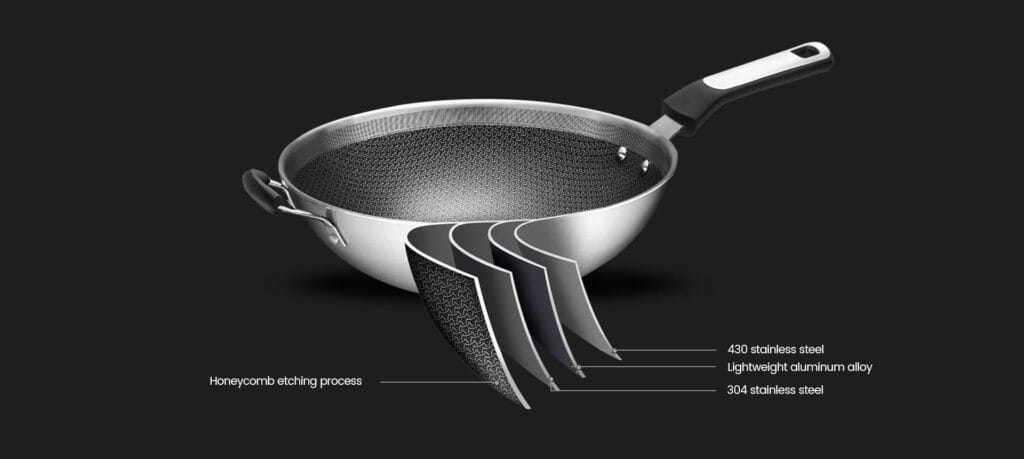
What Makes Triply Cookware Different from Aluminum Cookware?
• Triply Cookware Structure: Triply cookware combines three layers—two outer layers of stainless steel with an aluminum core in the middle. This design gives it both the durability of stainless steel and the excellent heat conductivity of aluminum.
• Aluminum Cookware Structure: Aluminum cookware is usually a single layer, or it may be anodized for added durability. It’s known for quick heating but lacks the layered construction that offers added durability.
Advantages of Triply Cookware:
• It provides even heat distribution, which is great for dishes requiring temperature control.
• Stainless steel outer layers make it corrosion-resistant, scratch-resistant, and easy to clean.
Advantages of Aluminum Cookware:
• Lightweight and heats up quickly, making it ideal for fast cooking.
• It’s an affordable option and works well for everyday cooking tasks.
While aluminum cookware is lightweight and budget-friendly, Triply cookware offers better heat distribution and durability, making it more suitable for a broader range of cooking styles.
How Does Triply Cookware Compare with Stainless Steel Cookware?
• Triply Cookware Structure: The three-layer Triply design includes a heat-conductive aluminum core, which improves heat distribution compared to single-layer stainless steel.
• Stainless Steel Cookware Structure: Standard stainless steel cookware is typically single-layer and, while durable, doesn’t conduct heat as efficiently. Higher-end stainless steel may include an aluminum or copper core to address this limitation.
Advantages of Triply Cookware:
• With its aluminum core, Triply cookware offers better heat distribution than single-layer stainless steel, making it versatile and efficient for various cooking needs.
• It’s corrosion-resistant and safe for use with acidic foods.
Advantages of Stainless Steel Cookware:
• Extremely durable, scratch-resistant, and rust-resistant, ideal for high-heat cooking.
• It has a polished, attractive finish that doesn’t interact with food, which is perfect for presentation.
While stainless steel cookware is highly durable, Triply’s multi-layer design enhances its heat distribution, making it a better option for cooking delicate dishes that require precise temperature control.
How Does Triply Cookware Compare with Copper Cookware?
• Triply Cookware Structure: Triply cookware’s aluminum core offers heat distribution similar to copper, but with stainless steel’s durability and ease of maintenance.
• Copper Cookware Structure: Copper cookware conducts heat extremely well, often with a stainless steel lining to prevent reactivity with food, especially acidic ingredients.
Advantages of Triply Cookware:
• Low-maintenance and corrosion-resistant, with heat distribution comparable to copper.
• More affordable than copper and doesn’t require frequent polishing.
Advantages of Copper Cookware:
• Superior heat conductivity, ideal for temperature-sensitive dishes.
• Aesthetic appeal and a luxurious look that’s favored in professional kitchens.
Copper is a favorite for professional chefs because of its precise temperature control, but it requires regular maintenance. Triply cookware offers a similar level of heat distribution at a lower cost and is easier to maintain.
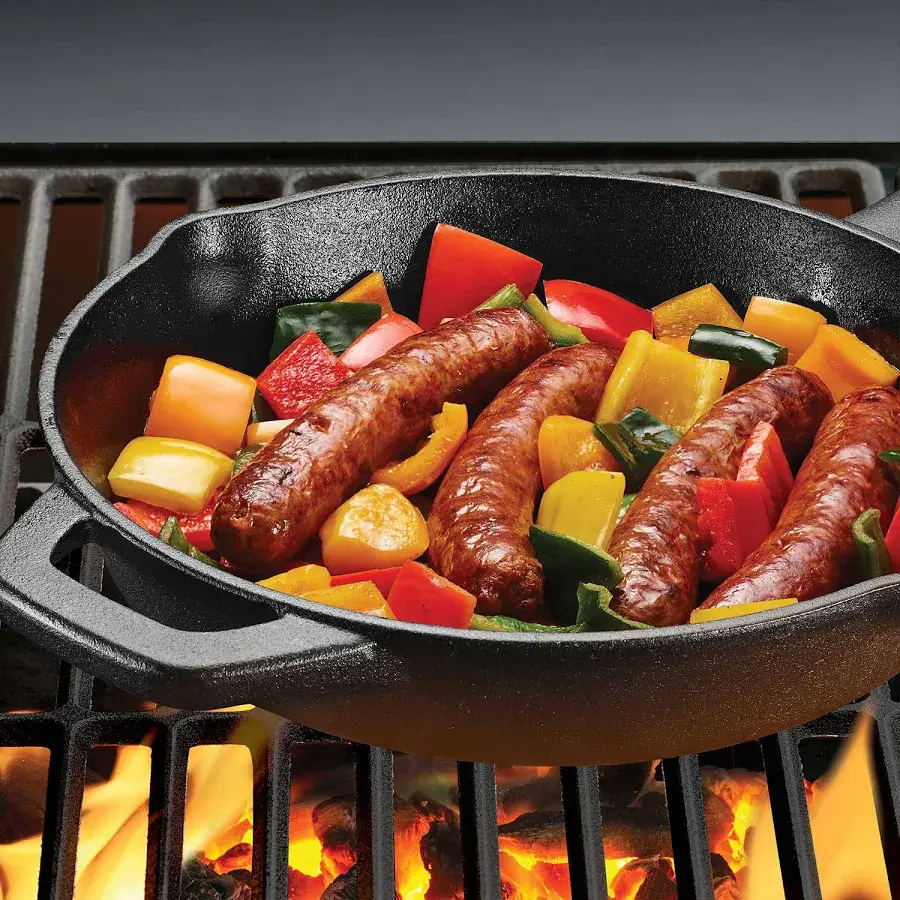
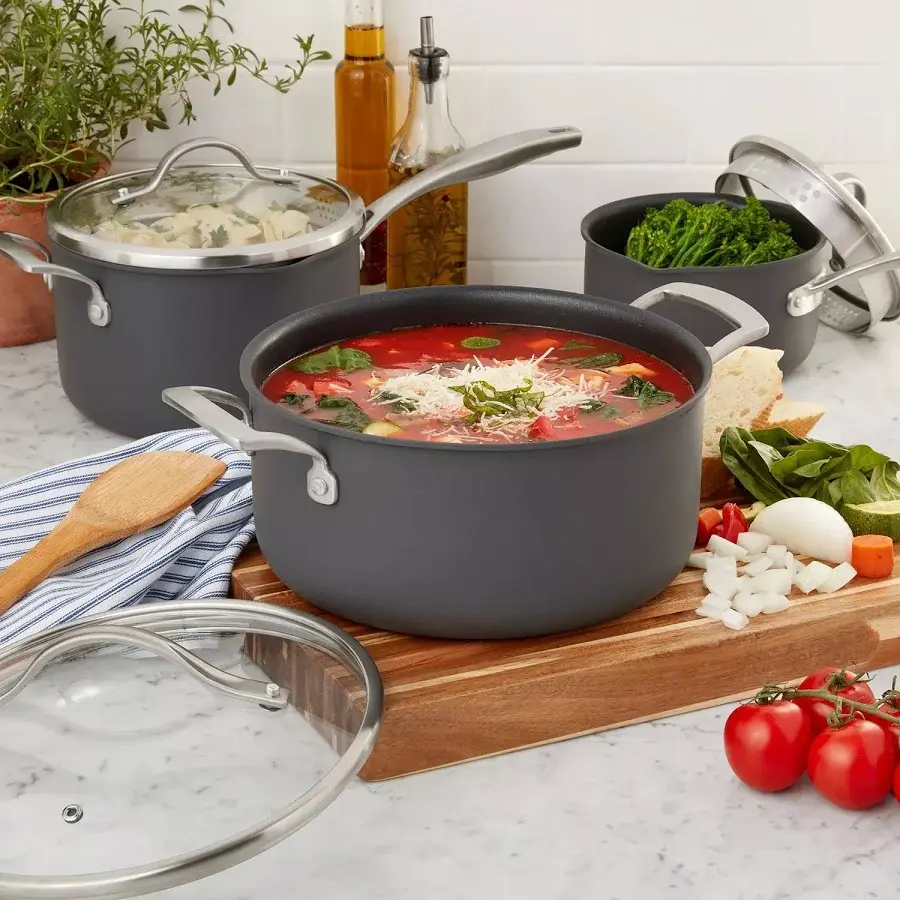
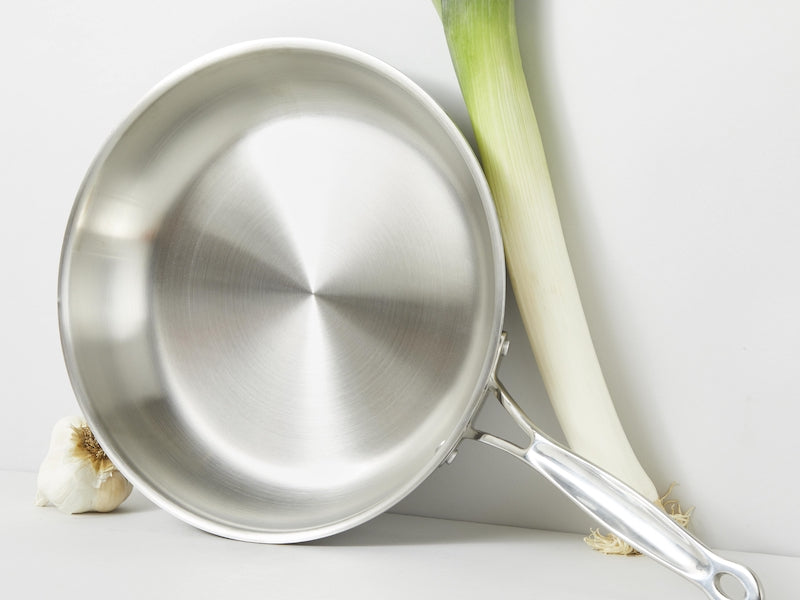
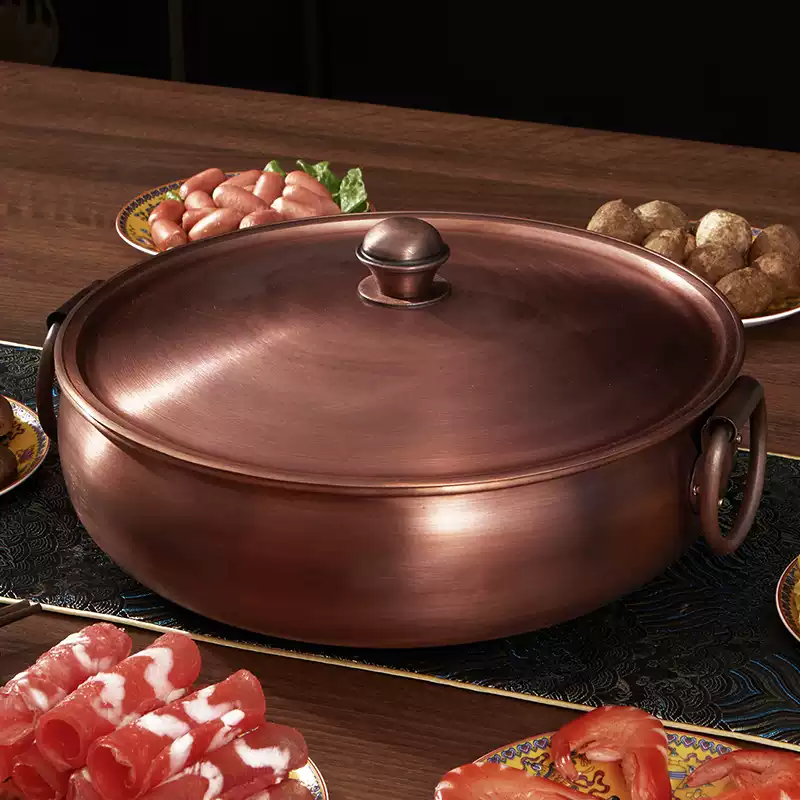
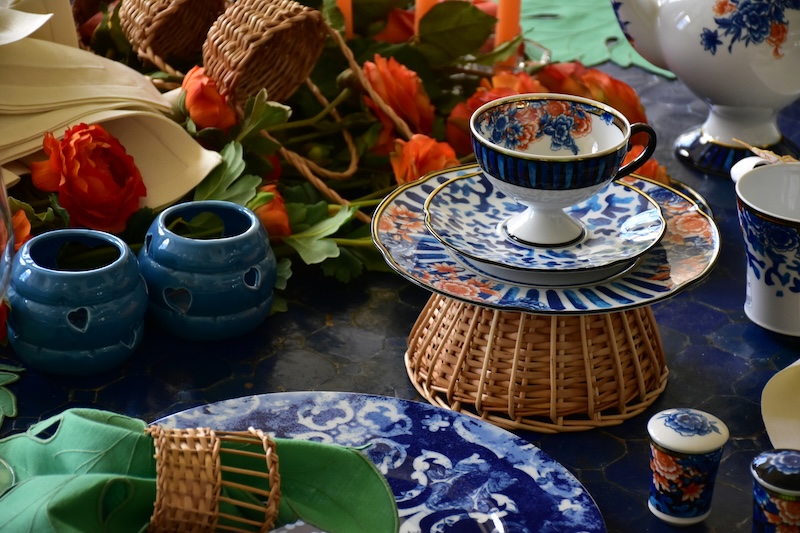
How Does Triply Cookware Compare with Cast Iron Cookware?
• Triply Cookware Structure: The three-layer construction of Triply cookware distributes heat evenly and is lighter than cast iron, making it easier to handle and clean.
• Cast Iron Cookware Structure: Cast iron has excellent heat retention and is naturally non-stick when seasoned, but it’s heavy and requires ongoing maintenance to prevent rust.
Advantages of Triply Cookware:
• Even heating and easy maintenance, ideal for frequent use in various cooking methods.
• Durable and moderately weighted, making it easier to handle.
Advantages of Cast Iron Cookware:
• Excellent heat retention, ideal for high-temperature cooking, searing, and slow-cooking dishes.
• Naturally non-stick when seasoned properly, adding cooking convenience.
Triply cookware’s lighter weight and ease of cleaning make it a strong choice for everyday use, while cast iron is perfect for high-heat and slow-cooking methods but requires more care.
What is the Cost Difference Between Triply Cookware and Other Types?
• Triply Cookware: The multi-layer construction of Triply cookware is typically more expensive than single-material cookware like aluminum or stainless steel but is less costly than copper. Its durability and even heating make it a high-value option.
• Other Types:
• Aluminum and Stainless Steel: Single-layer aluminum and stainless steel are generally affordable, though they lack the performance benefits of Triply cookware.
• Copper: Copper is the most expensive material, and its high maintenance requirements make it best for professional use.
• Cast Iron: Cast iron has a moderate price point and provides excellent heat retention, but it requires regular maintenance.
For those who value performance, Triply cookware strikes a good balance between cost and functionality. Single-material cookware may be cheaper, but it often lacks the versatility and durability of Triply, while copper is typically reserved for those who don’t mind the high cost and upkeep.
Claim: Why Triply Cookware Offers the Best Balance of Performance and Durability
Triply cookware’s three-layer structure delivers outstanding heat distribution, durability, and low maintenance, making it an ideal choice for both home and professional kitchens. Its stainless steel exterior and aluminum core offer balanced performance that meets the needs of various cooking styles without the drawbacks of single-material cookware. Research supports that Triply cookware consistently offers excellent value, making it a smart choice for versatile, high-quality cooking.
Conclusion: Which Cookware Type is Right for You?
In summary, Triply cookware excels as a well-rounded option with a balanced mix of durability, heat efficiency, and ease of maintenance. While each material has its unique strengths, Triply’s multi-layer construction makes it adaptable for most cooking needs.
For everyday meals or special recipes, Triply cookware provides the dependable, even heating and durability that home and professional cooks alike appreciate. By comparing the pros and cons of each type, I hope this guide helps you choose cookware that perfectly complements your kitchen. For those seeking a versatile, high-quality cookware investment, Triply is an exceptional choice.

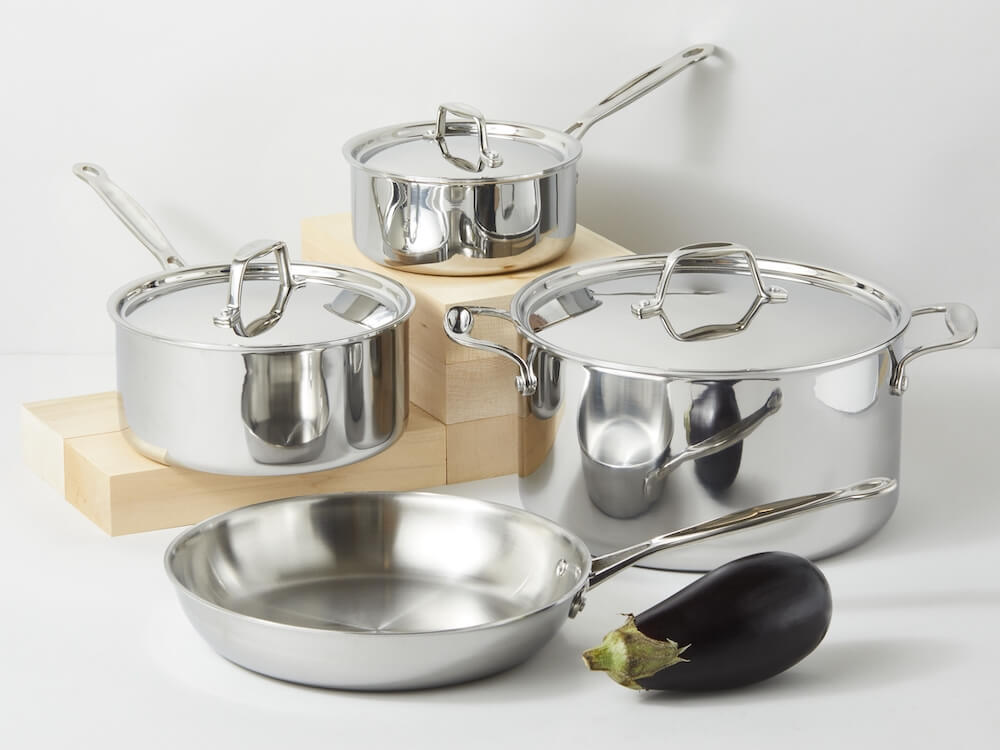

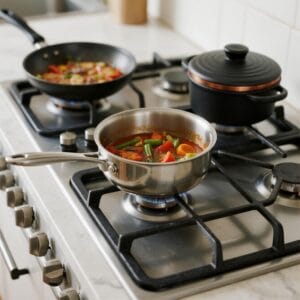
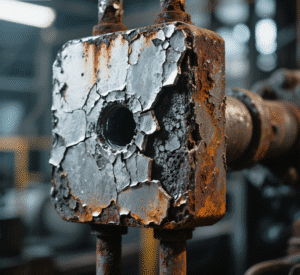
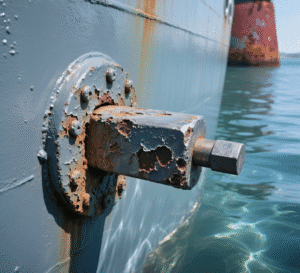
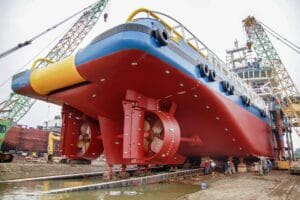
One Response